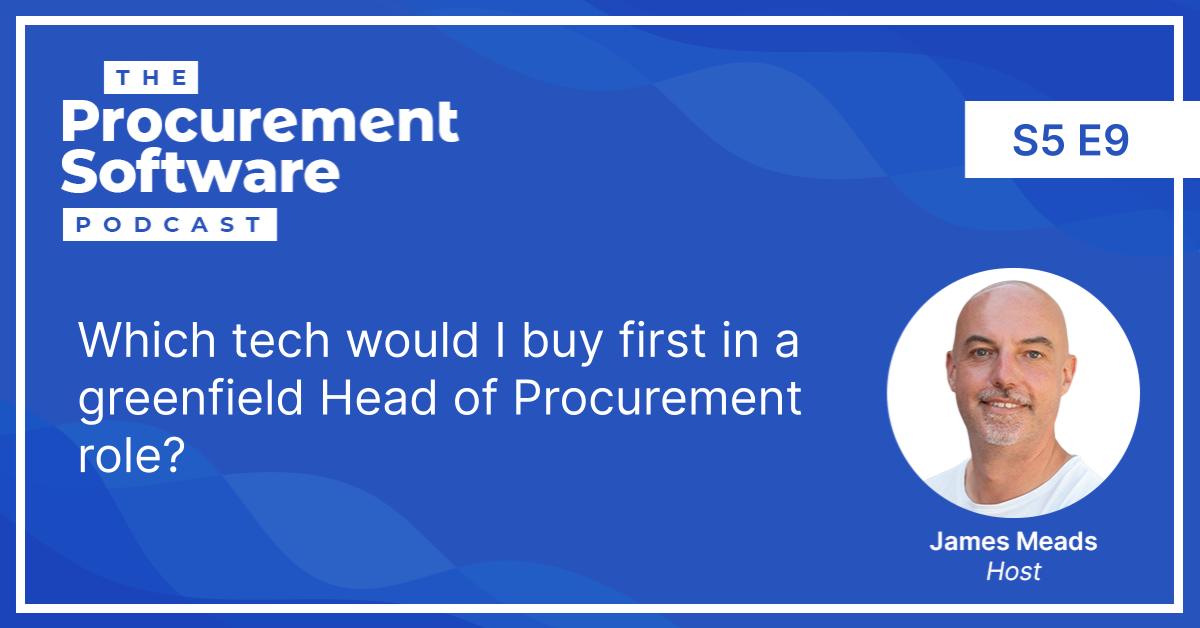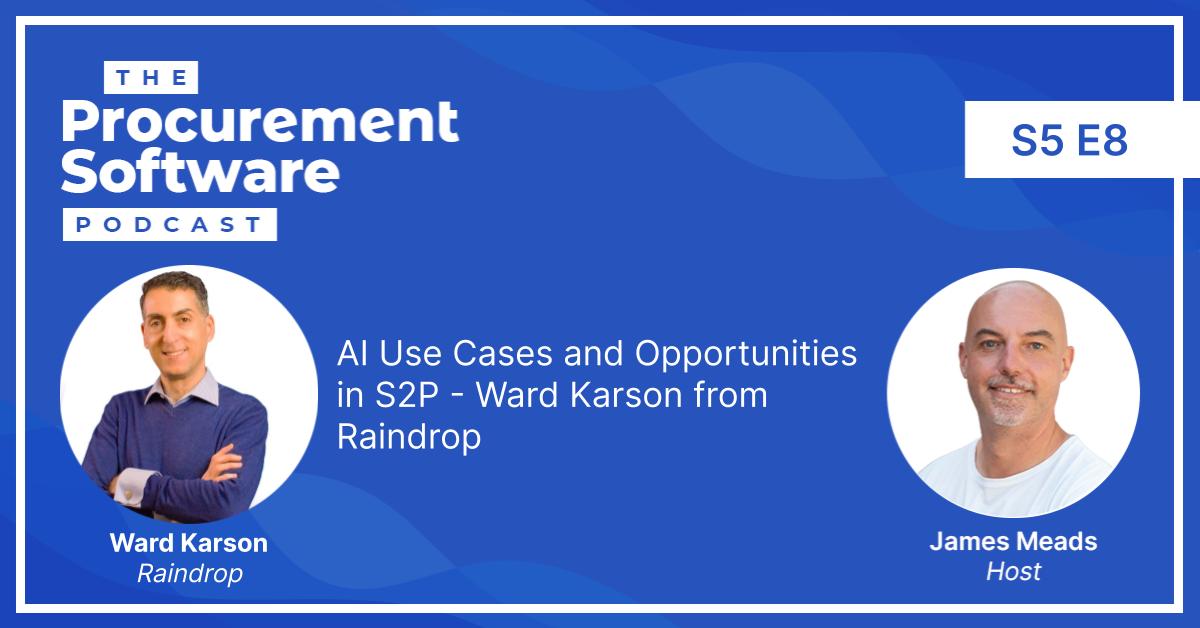On this week’s episode, we explore a topic that is becoming ever more important when it comes to selecting a piece of software in the B2B space.
Adoption and acceptance of procurement technology within an organisation is highly dependent on a software’s user experience and ease of use. And yet very little is spoken about this when we look at review sites and awards for procurement software.
This week’s guest is Jack MacFarlane, CEO of DeepStream Technologies. They’re an e-sourcing platform with UX at the heart of what they do. But can it compete and hold its own against established solutions already on the market?
Putting User Experience at the Heart of E-Sourcing Software – Jack MacFarlane from DeepStream
Jack is not a procurement pro and actually has a background in investment banking, as he explains in the intro. Going from here to found a procurement software company was a decision he took as a result of a gap he saw in the market for businesses to transact and source with each other more effectively.
He saw an email and attachment-based sourcing methodology that was endemic in the businesses he had worked in or experienced, and knew there was a better way. This despite some of the more mature and established competition that is already out there in the marketplace.
User experience: how important is it compared to features?
Being the “Mac vs. the Microsoft” as Jack explains it was the USP they wanted to achieve when designing the experience behind DeepStream. From a product philosophy perspective, building a digital platform that was as straightforward to use as sending emails and Excel sheets was their main goal.
Stripping out features and functionality was seen as a necessary evil to ensure that simplicity was key, all the way from supplier onboarding through to sourcing and awarding of tenders.
What impact can having a better UX have when it comes to user adoption?
The comparison that Jack makes is with the smartphone.
We use a multitude of apps to perform all the activities we use our smartphone for. There isn’t one single suite we use on our phones. The same argument can be made for best-of-breed procurement technology because design and functionality, when it’s done right, can trump an all-in-one platform when it comes to usability and adoption.
The easier it is you make something to use, the lower the barriers are to adoption. People can self-learn without the need for lengthy courses or training. You don’t need consultants during the implementation phase.
So, logically you’re then much more likely to get higher adoption. Not only that, but over time, if the software is easy to use then people are likely to stick with using it vs. reverting to the tried and tested method of using email and spreadsheets.
The case for features vs. simplicity
If you can essentially digitise within a day, and have users and business units up and running almost immediately, it can organically expand and develop more quickly than a more complex piece of software.
“You’re never going to see the benefits of digital platforms if you have low engagement rates and it’s hard to use” as Jack argues.
He sees the more traditional enterprise model to be:
- Strategy to buy a feature rich, expensive software suite that requires a lot of training to use
- Get management buy-in
- Top down “enforcement” of the policy
Which ultimately fails if over time, users revert back to form and use what they feel comfortable with i.e. email and Excel.
What about UX for supplier onboarding?
While suppliers will always be sceptical towards e-sourcing software, DeepStream have endeavoured to make the supplier experience as smooth as possible.
The average onboarding time for suppliers is < 5 minutes and it’s free to register. There are also a couple of measures that they are using to encourage suppliers to get more from the platform
Supplier engagement is one of the KPIs that they track in terms of response rate vs. the previous process before implementing DeepStream as a platform. What they are seeing is that it is higher when they use the platform.
They put this down to not just user experience but also the automation of the “nudging” to get them to sign up, accept and respond to the RFP. Doing this by email is manual, whereas this can be automated using an e-sourcing tool.
How are DeepStream growing in a crowded marketplace?
Their feedback from customers is that they see the benefit as being able to have all of their data in a single source of truth, especially with increasing audit and compliance requirements.
The “G” in ESG of having a collaborative, easy-to-use software for all of their data governance in the sourcing process is a big plus point.
Supplier evaluation (qualitative and quantitative) is also a feature and a benefit of being able to use an e-sourcing platform, and DeepStream also offers this.
Supplier matching and leveraging the network data that is in the Deep Stream platform. Building algorithms that will help to match suppliers that may be interested in bidding on the items that a client is seeking to source. As more clients and suppliers sign up, this will also grow and increase in value.
Are DeepStream seeking to niche down into a specific sector to leverage this further?
While on the one hand the product is industry agnostic, to benefit from supplier matching clearly helps if they have customers from a similar industry sector.
DeepStream has specifically niched down on the greentech sector and has seen rapid growth in this area. Because many of these companies are scaleups or new companies who don’t have a stack of legacy software, the mindset of these type of organisations seems to match their philosophy with the UX-first proposition.
The appetite within this industry sector tends to be more open towards using new technology and seems to be uninhibited by a more resistant-to-change mindset that can be found in more traditional corporations.
Stay in touch!
- Contact Jack by email
- DeepStream website
- Sign up for the Procuretech Podcast Newsletter
- Book an Intro Call and let’s talk all things Digital Procurement!
- Connect with James on LinkedIn
- Follow The Procuretech Podcast LinkedIn Page


